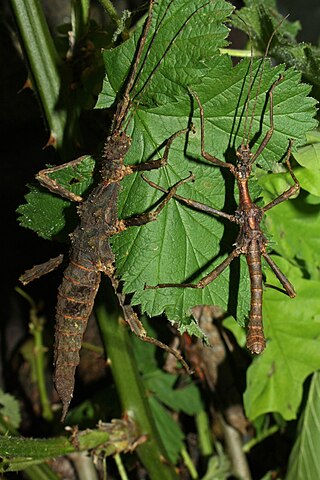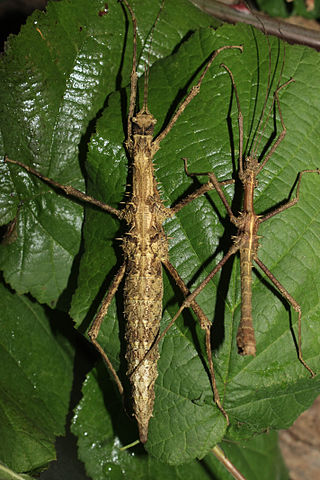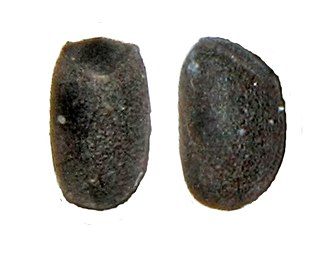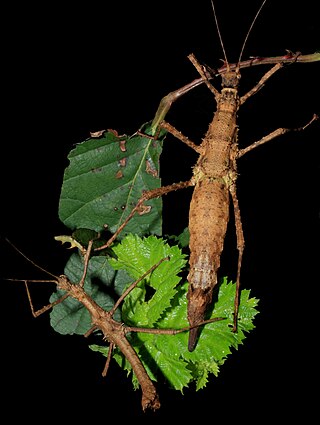
The Heteropterygidae is a family of stick insects belonging to the suborder Euphasmatodea. Species can be found in Australasia, East and Southeast Asia. About 150 valid species have been described.

The Obriminae are the most species-rich subfamily of the Phasmatodea family Heteropterygidae native to Southeast Asia. It is divided into two tribe.

Datamini is the only tribe within the subfamily of the Dataminae from the order of the Phasmatodea. The representatives of this subfamily are on average not as large as those of the other two subfamilies belonging to the family of Heteropterygidae.

Hoploclonia is the only genus of the tribe Hoplocloniini and brings together relatively small and darkly coloured Phasmatodea species.

The Obrimini are the most species-rich tribe of the Phasmatodea family of the Heteropterygidae native to Southeast Asia.

Miroceramia is a monotypic genus of stick insects, containing Miroceramia westwoodii as the only described species. It is the only fully winged one of the subfamily Obriminae.

Aretaon is a genus of stick insects native to Borneo and the Philippine island Palawan.

Trachyaretaon is a genus of stick insects native to the Philippines.

Brasidas is a genus of stick insects that is native to the Philippines and is named after the Spartan general Brasidas

Obrimus is a stick insect genus native to the Philippines. It is type genus for the tribe and the subfamily in which it is listed.

Eubulides is a stick insect genus native to the Philippines.

Theramenes is a genus of medium-sized stick insects in the tribe Obrimini, which is native to the Philippines and to the Indonesian Talaud Islands.

Heterocopus is a monotypic stick insect genus, containing Heterocopus leprosus as the only valid species.

Trachyaretaon echinatus is the type species of the genus Trachyaretaon in the order of the stick insects.

Stenobrimus is a genus of medium-sized stick insects native to the Philippines.

Brasidas cavernosus is a representative of the stick insects native to the Philippine island Luzon. It is considered one of the largest species in the subfamily Obriminae.

Tisamenus ranarius is a stick insect species (Phasmatodea), in the family of the Heteropterygidae native to the Philippines.

Brasidas lacerta is a species of stick insect in the family Heteropterygidae which is endemic to Mindanao. Due to its extreme variability, and the nymphs being spinier than to the adults, the species has been described under other names, resulting in a total of seven synonyms.
Tisamenus asper is a stick insect species (Phasmatodea), in the family of the Heteropterygidae endemic to the Philippine island Luzon.
Obrimus quadratipes is a stick insect species from the family of Heteropterygidae native to the Philippine island of Luzon.
















